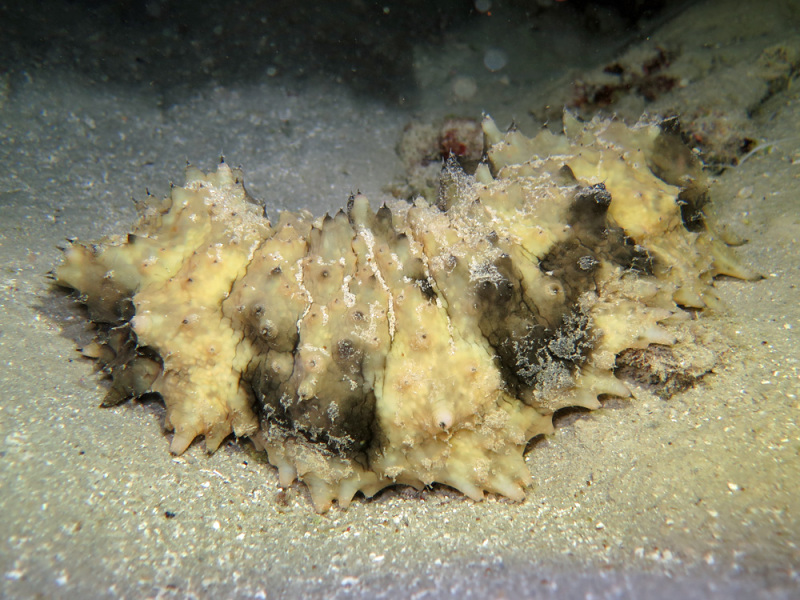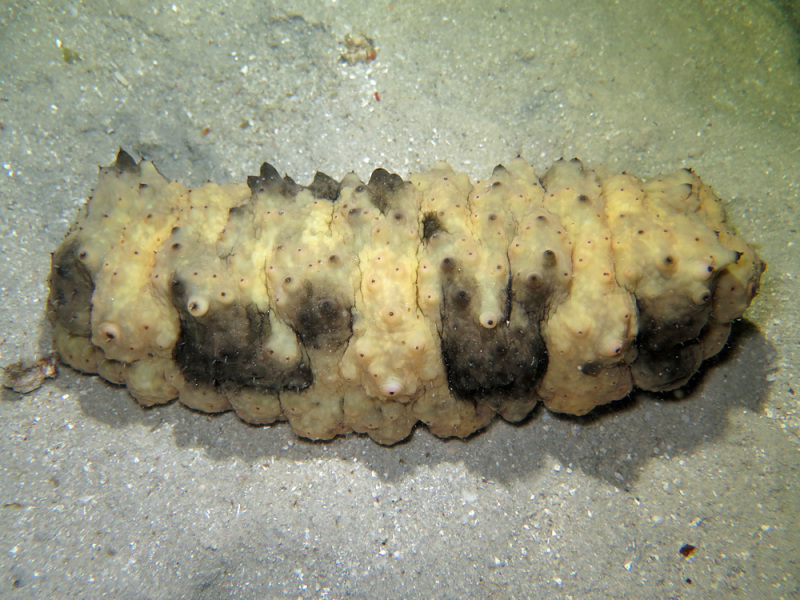
©Anne Hoggett: Stichopus monotuberculatus? 30 to 35 cm long, photographed at night as found in shallow overhang at base of reef, Lizard Island lagoon (22 Jan 2016).

©Anne Hoggett: Stichopus monotuberculatus? removed from reef overhang, Lizard Island lagoon (22 Jan 2016). Lateral papillae retracted when animal was disturbed.
Colours
Distinguishing features
Three very similar-looking species of Stichopus are known to occur on the Great Barrier Reef and there may be additional "cryptic" species. Microscopic examination and/ or genetic analysis is needed to assign individuals to the correct species. This Field Guide lists two of those species so far, both names with question marks because we cannot be certain they are correct. They have different habitats and behaviour so they appear to be different species.
Stichopus monotuberculatus? is nocturnal and found in water as shallow as 3 metres and is associated with reefs. Byrne et al (2010) confirmed the presence of S. monotuberculatus at Lizard Island in a genetic study and note that the species is active nocturnally.
Stichopus naso is exposed during the day and found in deeper, off-reef water (> 15 metres depth).
Size
- Size data has not been obtained.
Depth range
- Depth range data is not yet available.
Synonyms
Similar taxa
-
Animalia:
species: Stichopus naso
At Lizard Island, it is active during the day and found in deeper, off-reef habitats than Stichopus monotuberculatus? -
Animalia:
species: Stichopus horrens
Presence at Lizard Island not confirmed. Has distinctive tack-shaped spicules in the papillae.
Distribution
Web resources
References
- Byrne, M., F. Rowe and S. Uthicke (2010). Molecular taxonomy, phylogeny and evolution in the family Stichopodidae (Aspidochirota: Holothuroidea) based on COI and 16S mitochondrial DNA, Molecular Phylogenetics and Evolution, doi: 10.1016: jymev201004013. LIRS catalog number 1292.
- Purcell, S.W., Y. Samyn and C. Conand (2012). Commercially important sea cucumbers of the world 150 pp., 30 pl. Food and Agriculture Organization of the United Nations, Rome.




